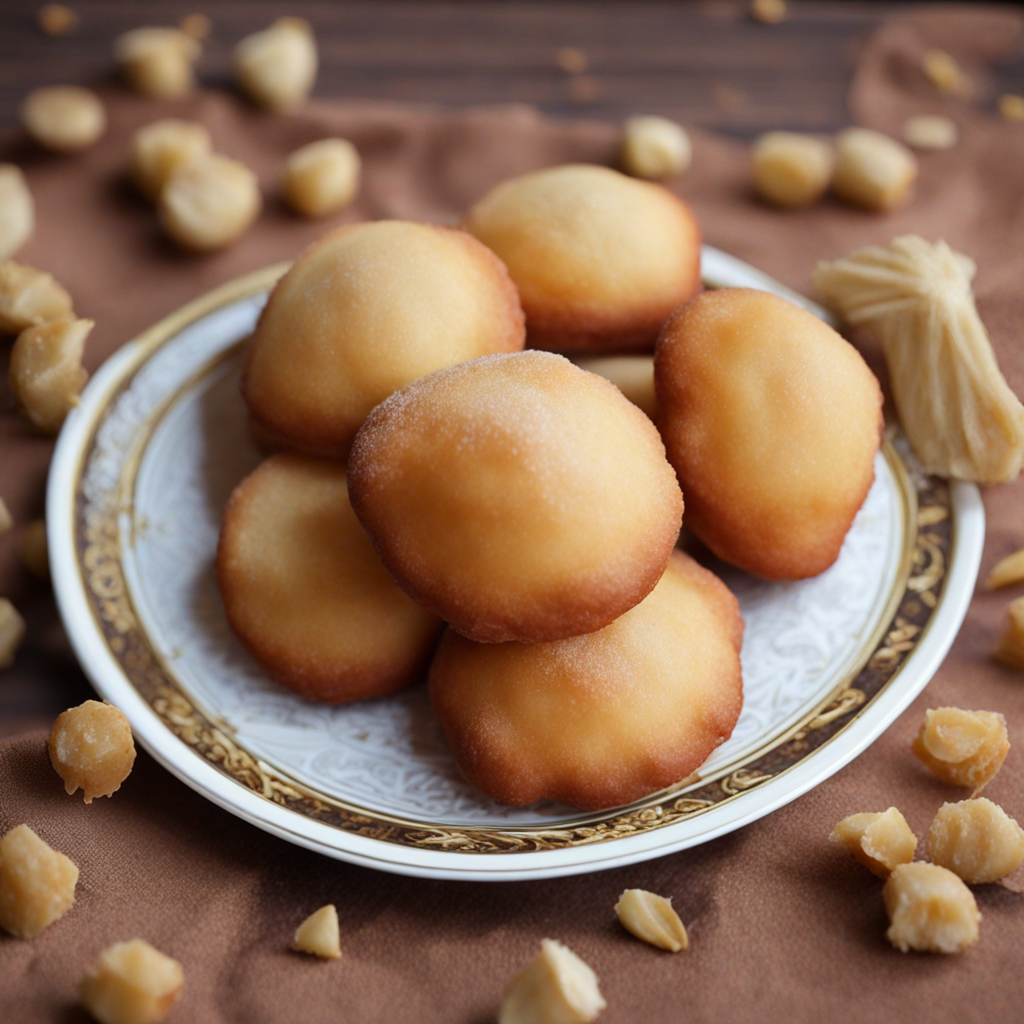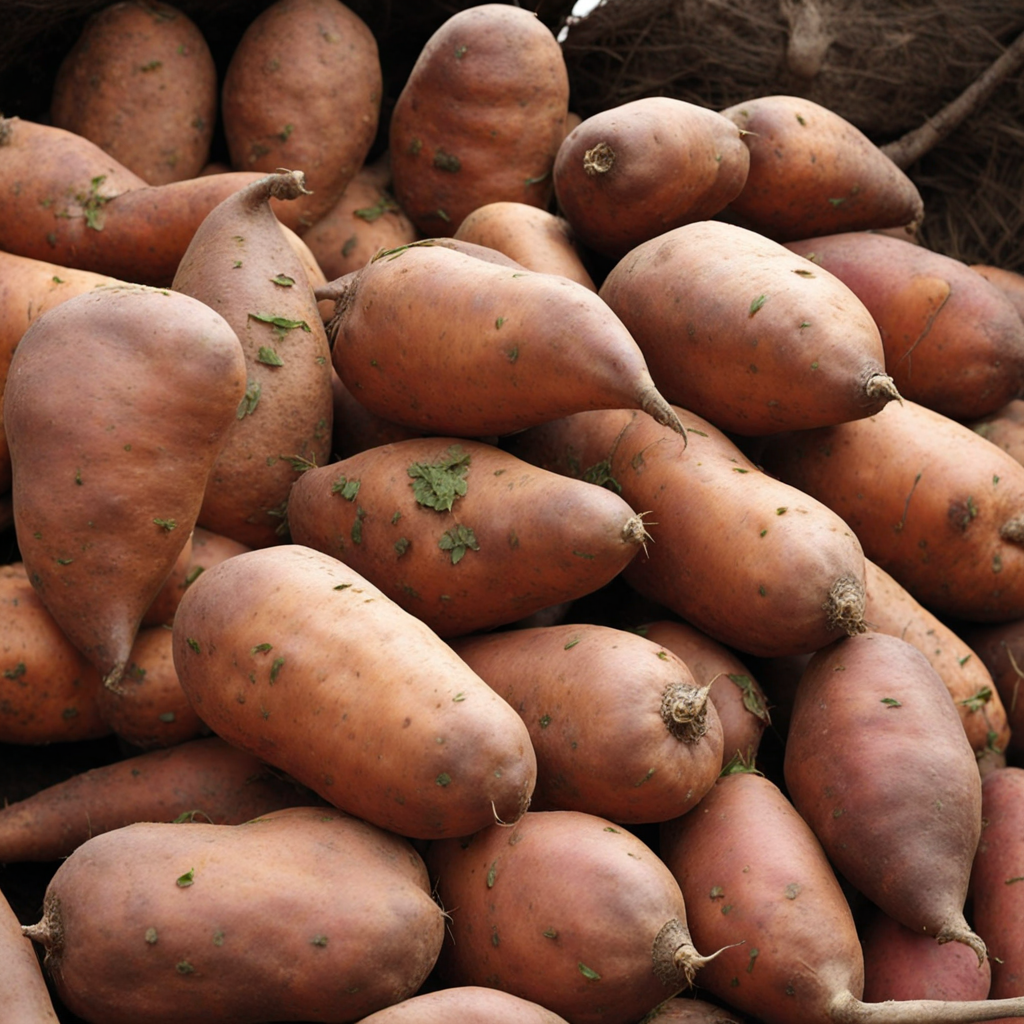Mandazi
Mandazi is a delightful East African snack, particularly popular in Burundi, known for its airy texture and subtle sweetness. These deep-fried doughnuts are made primarily from flour, sugar, and coconut milk, which gives them a rich, creamy flavor. The dough is often spiced with cardamom or nutmeg, adding a warm and aromatic quality that elevates the overall taste experience. When cooked to golden perfection, Mandazi boasts a crisp exterior that contrasts beautifully with its soft, pillowy interior, making each bite a pleasurable indulgence. Traditionally enjoyed during festive occasions or as an everyday snack, Mandazi can be served plain or dusted with powdered sugar for an extra touch of sweetness. Some variations incorporate additional ingredients like mashed bananas or chocolate, providing a unique twist on the classic recipe. Pairing Mandazi with a cup of tea or coffee enhances the experience, as the slightly sweet and spiced flavors complement the warm beverages beautifully. Exploring Mandazi is not just about the taste; it's also about the cultural experience it represents. This beloved treat is often shared among family and friends, symbolizing togetherness and celebration in Burundi. Whether you are enjoying them at a local market or trying your hand at making them at home, Mandazi offers a delicious journey into the heart of Burundian cuisine, inviting you to savor its rich flavors and traditions.
How It Became This Dish
The History of Mandazi: A Culinary Journey through Burundi #### Introduction Mandazi, often referred to as a "East African doughnut," is a beloved fried pastry that carries with it a rich tapestry of history, culture, and evolution. Although it is enjoyed across several East African nations, including Kenya and Tanzania, its roots run deep in the heart of Burundi, where it transcends mere sustenance to become a symbol of community and celebration. #### Origins of Mandazi The origins of Mandazi can be traced back to the broader culinary traditions of the Swahili Coast, where the influence of Arab traders and local African customs blended seamlessly. This fusion gave rise to several fried pastries that are similar in nature to Mandazi. In Burundi, the local ingredients—such as maize, cassava, and sorghum—were incorporated to adapt the pastry to regional tastes and availability. The name "Mandazi" likely derives from the Swahili word "mandazi," which itself may be rooted in the Arabic "مندانزي" (mandāzi), referring to a fried bread. This reflects the historical interactions between Arab traders and the East African coastal communities, which facilitated the exchange of culinary traditions. The adaptation of this recipe into the Burundian context involved using local staples like wheat flour, sugar, and coconut milk, resulting in the unique flavor and texture that define Mandazi today. #### Cultural Significance In Burundi, Mandazi holds a special place in social gatherings, celebrations, and daily life. It is commonly served at breakfast but can also be enjoyed as a snack throughout the day. The versatility of Mandazi allows it to be paired with various accompaniments, such as tea, coffee, or even fruit. During special occasions, such as weddings, religious festivities, or communal gatherings, Mandazi symbolizes hospitality and generosity, often being one of the first dishes offered to guests. Moreover, the preparation of Mandazi is an act of togetherness. Families often come together to make the dough, cut the shapes, and fry them, fostering a sense of community and shared tradition. This communal aspect not only strengthens familial bonds but also reinforces cultural identity, as recipes are passed down through generations, each adding their personal twist to the classic treat. #### The Development of Mandazi Over Time As Burundi navigated through various social and political changes, so too did its culinary landscape. During the colonial period and the subsequent conflicts, the availability of certain ingredients fluctuated, which in turn influenced the recipes for Mandazi. For instance, when wheat flour was scarce, bakers may have turned to alternative flours, such as cassava or maize, leading to the development of regional variations of Mandazi, each with its unique texture and flavor profile. In contemporary Burundi, Mandazi has also undergone a transformation influenced by globalization and culinary innovation. While traditional recipes still hold sway, modern chefs and home cooks are experimenting with flavors, incorporating ingredients like chocolate, spices, and fruit fillings to cater to evolving palates. This blending of tradition and innovation has made Mandazi not only a nostalgic comfort food but also a canvas for culinary creativity. #### Mandazi in the Global Context As Burundians have migrated across the globe, they have taken their culinary traditions with them, introducing Mandazi to new audiences. In cities with significant Burundian and East African diaspora populations, such as Bujumbura, Brussels, and New York, one can find Mandazi served in cafes and restaurants, often alongside other staples of East African cuisine. This globalization of Mandazi not only highlights its adaptability but also serves as a cultural ambassador, inviting others to appreciate Burundian heritage through food. Social media has played a crucial role in this culinary exchange, with platforms showcasing vibrant photographs and recipes for Mandazi, inspiring home cooks and food enthusiasts worldwide. As people share their experiences and variations of Mandazi, a global community has formed around this simple yet profound dish. #### Conclusion The story of Mandazi is one of resilience, adaptation, and community. From its origins on the Swahili Coast to its current status as a cherished staple in Burundian culture, Mandazi embodies the spirit of a people who have weathered storms of change while maintaining a strong connection to their culinary heritage. As we savor this delicious pastry, we partake in a history that is as rich and diverse as the land it comes from—a testament to the enduring power of food to unite, celebrate, and nourish. In a world that often feels fragmented, the shared experience of enjoying Mandazi serves as a reminder of the simple joys that food can bring, bridging cultures and generations through taste and tradition. Whether enjoyed in a bustling market in Bujumbura or at a family gathering anywhere in the world, Mandazi continues to be a beloved treat that encapsulates the essence of community and the celebration of life.
You may like
Discover local flavors from Burundi







